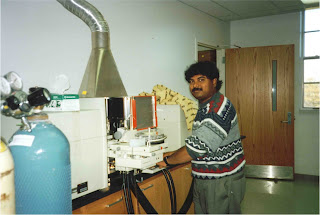As a Marine Estuarine Environmental Scientist who did Ph.D thesis research on Chesapeake Bay sediments, I would like to add my comments on the Sethu Project.
Humans will never learn the effects of the projects that they do against nature, before they actually do it. (Best example - Humans thought CFC was a safe chemical and used it wherever they can and later Scientists found it was affecting the helpful ozone layer). Sethu project is another prime example of the previous statement.
The following are few studies done on Dredging in which people are worried about small organisms such as vegetation, seagrasses and eelgrass:
Dredging Effects on Vegetation Adjacent to the Gulf Intracoastal Waterway
Hard clam Mercenaria mercenaria in Cumberland Sound
Dredging effects on seagrasses: case studies from New England and Florida
Dredging effects on eelgrass (Zostera marina) in a New England small boat harbor.
Sethu Project requires more dredging which will affect a whole lot of marine environment.
Mechanical, Noise, Plume Water Quality, Plume Suspended Sediments Contaminant Pathways for Open-Water Disposal and Plume impacts will be some of the effects.
Indian coasts have a large variety of sensitive eco-systems. Sand dunes, coral reefs, mangroves, seagrass beds 7 wet lands are some that deserve special mention. Some of these are the spawning grounds and nurseries of a number of commercially important fishes, gastropods and crustaceans. A critical feature of these ecosystems are the variety of bioactive molecules that they host.
Recent mining of organisms from the tidal and inter-tidal zone have revealed large numbers of molecules with obvious application for human health and industrial applications. This could be the most commercially important aspect of the Coastal Zone. Molecules that show bioactivity from one ecosystem may not show the same activity, or level of activity, when mined from a different locale or different season. This feature alone should be reason enough for the protection of all such ecosystems, and not only representative isolated units in protected areas / parks.
Considering that Indian waters are of a good quality and that pollutant sources remain relatively confined, the protection of sensitive environments, with adjacent buffer zones should be promptly notified and enforced. Losses of such areas are losses to the common good and future generations.
Sand dunes seem to be ecosystems that are most often destroyed, probably because their place in the scheme of dynamic coastal morphology, is not obvious. Suffice to say that dunes are the reserves that nature stores, dissipates energy on, and moves when needed.
(
http://www.teriin.org/teri-wr/coastin/papers/paper2.htm).
Petroleum Exploitation, Fuel Storage, Energy Generation, Industrial and Commercial Development, Ship Breaking operations, waste dumps,. These activities have caused marine pollution -
Hugli Estuary is most polluted estuary in the world. Factories from Nabadwip discharge more than half billion liters of untreated wastes a day. However fate and effects of pollutants have not been studied due to poor administrative system.
Hoogly river carry effluents that have contaminated fish and shell fish with heavy metals such as
Ni, Cu, Cd and Zn.
The sediments near Haldia have upto 10 ug/g of pesticides. These river waters are contaminated by e-coli, shigella, salmonella and other human pathogens - indication of severe sewage contamination.
The Bay of Bengal has virtually turned into a waste dump. (Protecting the Marine Environment from Land-Based Sources of Pollution ).
All the wastes are transported by water and settles in sediments. Once the sediments are dredged the contaminants will affect the fauna and flora of the Great heritaged Marine Environment of the World.
Dr. Charles Hocutt's (One of My Ph.D thesis supervisor) Scientific Research Paper- Evolution of the Indian Ocean and the drift of India - A vicariant event - clearly indicates that Indian Ocean is poorly known, particularly from a biogeographic perspective.
A first compilation of the type and quantum of pollutants into the coastal ecosystem of India are given below:
Input / pollutant
Quantum - Annual
1.
Sediments
1600 million tonnes
2.
Industrial effluents
50 x 106 m3
3.
Sewage - largely untreated
0.41 x 109 m3
4.
Garbage and other solids
34 x 106 tonnes
5.
Fertilizer - residue
5 x 106
6.
Synthetic detergents - residue
1,30,000 tonnes
7.
Pesticides - residue
65, 000 tonnes
8.
Petroleum hydrocarbons (Tar balls residue)
3,500 tonnes
9.
Mining rejects, dredged spoils & sand extractions
0.2 x 106 tonnes
We have to be very careful in not disturbing the Natural Marine Ecosystem.
As human induced climate change in recent future will increase intensity of hurricanes in areas such as Bay of Bengal which will add to the environmental deterioration.
Also Read about Dr. Badrinarayanan's interview in the following link:
http://kalyan97.wordpress.com/2007/08/01/492/
My vote on this: No to the Sethu Project. Instead of spending on destructive Sethu Project, spend on improving the Bay of Bengal and protect India's coastal and marine environments. With our friends at Cochin University we will be working towards that.
Makesh Karuppiah, Ph.D
Marine Estuarine Environmental Sciences.





